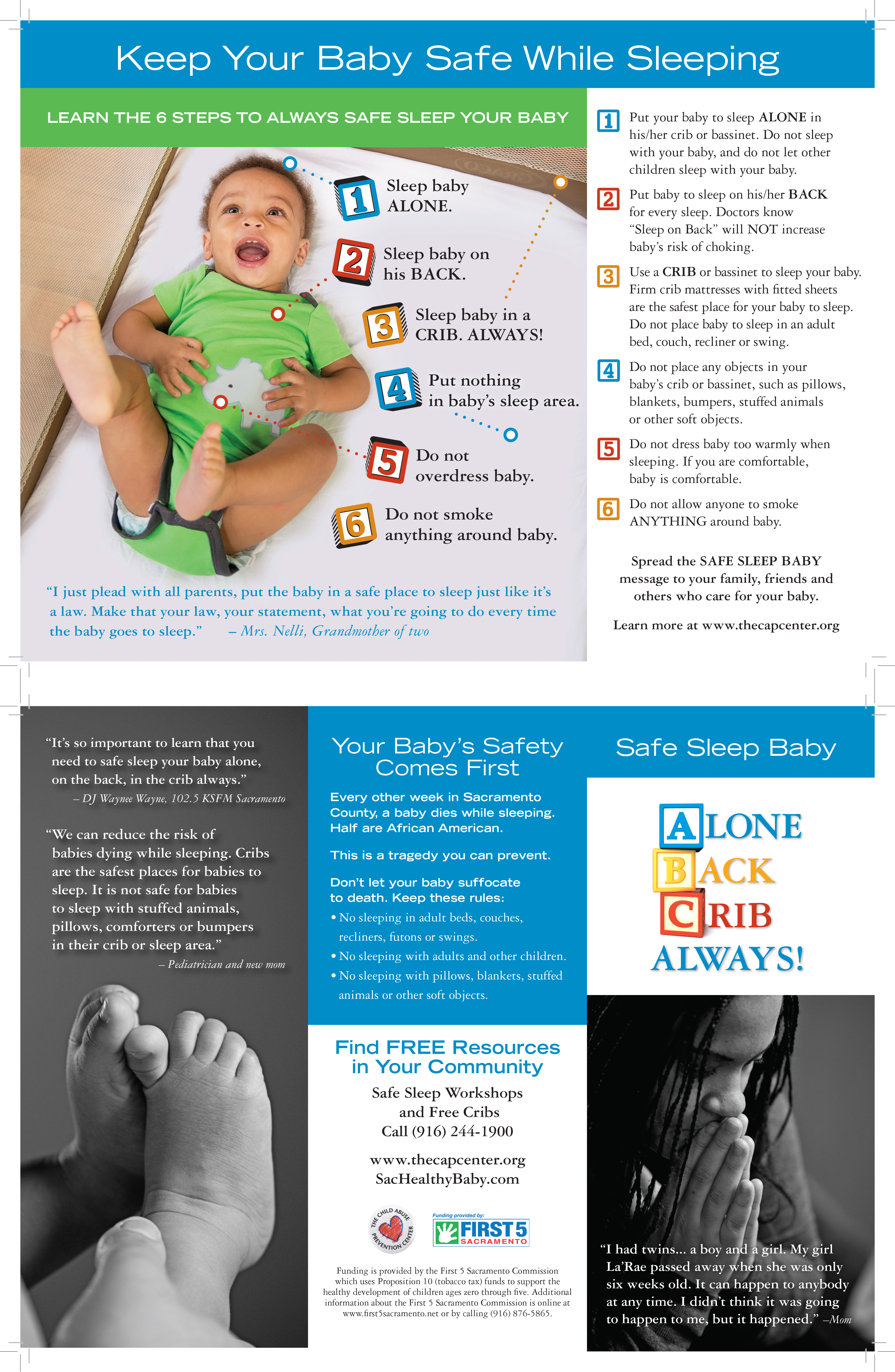Sacramento County Blue Ribbon Commission Report on Disproportionate African American Child Deaths states thirty-two percent (134 of 420) of infant sleep-related deaths from 1990 – 2009 were African American children. Infant sleep-related deaths are those deaths where a child less than one year old dies while sleeping. This includes Sudden Infant Death Syndrome (SIDS), Sudden Unexpected Infant Death Syndrome (SUIDS), and deaths of an Undetermined Manner depending on circumstances surrounding the infant death.
From 2004 through 2009, there were a total of 104 infant sleep-related deaths, of which 26% (27 of 104) were African American. Unsafe infant sleep conditions were known to be present in 89% (93 of 104) of all infant sleep-related deaths and 96% (26 of 27) of all African American infant sleep-related deaths. Unsafe infant sleep conditions include: non-infant bed, co-sleeping, and a sleep position other than on the back.
The American Academy of Pediatrics (AAP) lists several factors related to the sleep environment as being associated with a higher risk of SIDS/SUIDS and other infant sleep-related deaths, such as being placed to sleep in a prone position, a soft sleep surface, co-sleeping, or being put to sleep with items that could cover the head or face. [Link to Article]
AAP Recommendations for Infant Sleep Safety
- Until their first birthday, babies should sleep on their backs for all sleep times—for naps and at night. You should always place your baby to sleep on the back, but if your baby is comfortable rolling both ways (back to tummy, tummy to back), then you do not have to return your baby to the back.
- There should be no blankets, pillows, stuffed toys, or bumper pads around your baby, so that your baby does not roll into any of those items, which could cause blockage of air flow.
- Use a firm sleep surface. A crib bassinet, portable crib, or play yard that meets the safety standards of the Consumer Product Safety Commission (CPSC) is recommended along with a tightfitting, firm mattress and fitted sheet designed for that particular product. A firm surface is a hard surface; it should not indent when the baby is lying on it.
- Nothing else should be in the crib except for the baby.
- If your baby falls asleep in a car seat stroller, swing, infant carrier, or sling, you should move him or her to a firm sleep surface on his or her back as soon as possible.
- Room share—keep baby’s sleep area in the same room where you sleep for the first 6 months or, ideally, for the first year. Place your baby’s crib, bassinet, portable crib, or play yard in your bedroom, close to your bed.
- Only bring your baby into your bed to feed or comfort. Place your baby back in his or her own sleep space when you are ready to go to sleep. Bed-sharing is not recommended for any babies.
- Never place your baby to sleep on a couch, sofa, or armchair.
- Try giving a pacifier at nap time and bedtime. This helps reduce the risk of SIDS, even if it falls out after the baby is asleep.

First 5 Sacramento connects families with programs that give children a healthy start during that critical first 5 years. We understand that today’s parents face many challenges and tough choices as they raise their kids. That’s why we’re here to help.
RESEARCH
- SIDS and Other Sleep Related Deaths: Updated 2016 Recommendations for Safe Infant Sleeping Environment
- First 5 CAPC Safe Sleep Brochure
- First 5 CAPC Safe Sleep Poster
- Infant Safe Sleep Do and Don’t Poster
- Protect Me While I Sleep Poster
- How To Keep Your Sleeping Baby Safe: AAP Policy Explained
- Soothing a Crying Baby
